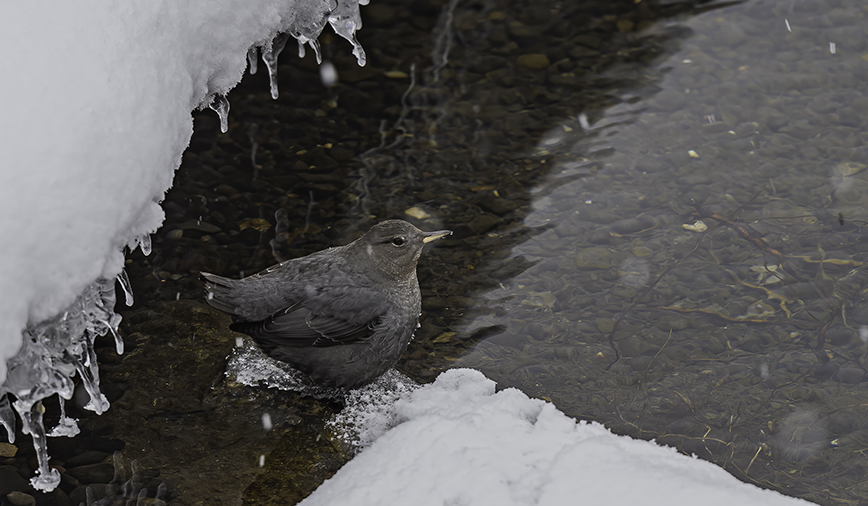Well, there’s no doubt, winter is here. And I’ll bet, if you’re a bird lover, your feeders are hung by the chimney, or wherever, with care. But when was the last time you filled your birdbath?
Even though snow blankets the ground right now, and snow, after all, is just fluffy, flaky water, finding a place to take a sip—or dip—in open, free-flowing H2O is really tough for our wild friends right now.
It’s true, birds and other animals can eat snow if they really need to hydrate. In fact, my cocker spaniel Benny takes special delight in gobbling gobs of the white stuff when he heads outside to do his business. I can only imagine the thoughts running through his happy but simple mind: “Oo! Cold! Oo! Good! Oo, wait, what did I come out here for?”
For Ben and other pets that have warm beds and bottomless bowls of kibble waiting indoors, eating snow is just one more source of amusement, and amazement. But for wildlife, the cost of eating snow is high.
This time of year, the animals that live in our backyards, parks and forest preserves maintain a delicate energy balance. Pretty much every calorie that goes in quickly goes back out, burned in the constant quest to stay warm and find food. The system doesn’t leave a lot of extra energy—yet extra energy is exactly what’s required when cold snow is consumed. It cools the body on the inside, which then must be warmed up again by burning more calories.
But wildlife needs water for more than just hydration in winter. As chilly, or chilling, as it may sound, bathing is a fact of life too.
Feathers and fur are wild animals’ primary lines of defense against winter’s cold. Yet when that plumage or pelage gets dirty, its insulating properties plummet. Regular baths, followed by sessions of preening or other grooming, help keep those coats clean and functional.
The other day we were visiting the soon-to-be home for our naturalist department, the Hickory Knolls Discovery Center. Although much work remains to be done on the inside of the building, my eyes kept looking out, through the windows to the spring-fed trickle of a stream running alongside the building.
The water, emerging from the ground at a nearly spa-like 54F, flowed for several yards before it started to freeze up. Along that open stretch, anywhere there was a riffle, there was a bird.
So now you’re probably thinking, all right, that’s great, but I don’t have a spring-fed stream dancing past my birdfeeder array. Not a problem, my friend.
All you need to do is resurrect that summer birdbath and outfit it with a heating coil. Available in electric and battery-operated models, birdbath heaters offer a practical solution to the problem of keeping water open in winter. Hang the heater on the birdbath, with care, and know that the wildlife soon will be there.
Pam Otto is the manager of nature programs and interpretive services for the St. Charles Park District. She can be reached at potto@stcparks.org or 630-513-4346.

